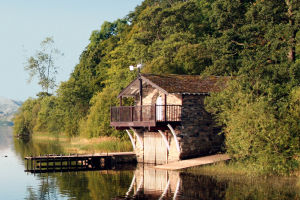An overpass is a modern bridge where two or more intersecting roads meet on a separate level in multiple directions.
It is a modern bridge built at the intersection of two or more roads, where the upper and lower levels are separated and do not interfere with each other in multiple directions. This includes sunken tunnels, as a bridge-type structure is formed above the main body of the tunnel.
Due to high construction costs, they are usually built only at interchanges between highways, urban arterials, or expressways. The main function is to allow vehicles to pass quickly in all directions without being controlled by traffic lights at the intersection.
An overpass is a modern bridge project. The basic feature is to form a three-dimensional intersection of multi-layered roads in three-dimensional space.
It is the inevitable product of the modernization of human transportation and urbanization of living areas, one of the public infrastructures of cities. It is an important and indispensable part of the efficient transportation system of contemporary society.
Functions and roles
1. Reduce or eliminate the conflict of different directions or types of vehicles on the original plane. It can relieve congestion, save travel time, enhance traffic safety, etc.
2. Some structure types of overpasses can divert traffic in the main road direction or even in the branch road direction to a certain extent.
3. Some structures of interchanges can have additional turnaround ramps. This provides a safer turnaround environment for vehicles and does not interfere with the rapid movement of mainline vehicles.
4. Can reduce or eliminate the probability of mixing motor vehicles with non-motorized vehicles, pedestrians, etc. Improve the overall safety factor of the road.
5. Combined with aesthetic design can be used as a local town card. Enhance the high image of the city. There are also potential values such as setting up advertising stalls in bridge piers and other places.
Disadvantages and hazards
Occupy land and destroy the environment. Reduce the space for greenery planting. Increases the cost of local building safety maintenance and affects the cityscape. Blocking the sunlight and view of low-rise residential residents.
Interferes with car owners' view of the street conditions on both sides. Increase exhaust gas and noise pollution, and make it more difficult to rescue traffic accidents.
When two roads intersect in the same plane, forming four directions from east to west, north to south, it is called an intersection. It is also called a four-way intersection. The intersection of three roads is often referred to as a T-junction and a Y-junction.
Due to the three-way intersection and four-way intersection directional characteristics (three-way intersection is one in and two out, the four-way intersection is one in and three out), vehicles in all directions will form diversion points, intersection points, merging points, and interweaving points when they pass simultaneously. Thus vehicles passing through the intersection of the road will not get safely and smoothly.
Diversion means that vehicles travelling in the same direction are separated into different directions. There can be problems with tailgating during this process. Merging refers to when vehicles travelling in more than two directions converge and then travel in the same direction, which can lead to jostling and tailgating.
An intersection is a point where two routes intersect at an angle greater than 45 degrees and less than 90 degrees. Collisions can easily occur at this point when vehicles are passing. Interweaving is a continuous slow merging and diverging of two streams of traffic travelling in the same direction, such as on a roundabout or traffic circle.
The same traffic accidents, such as tailgating, squeezing, and bumping, can occur in this state, leading to traffic congestion and road paralysis.


